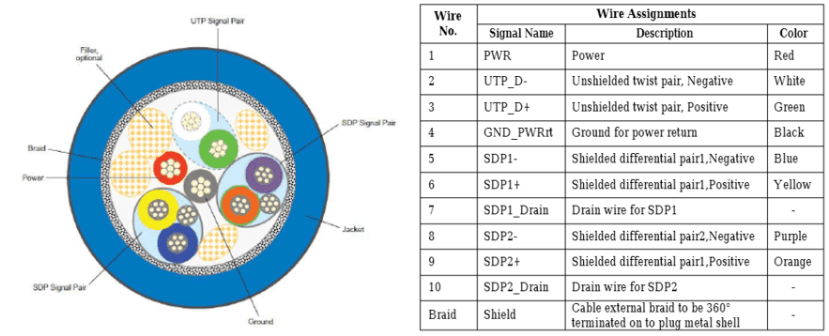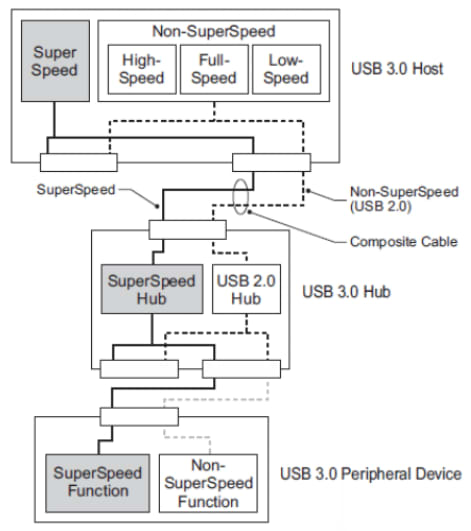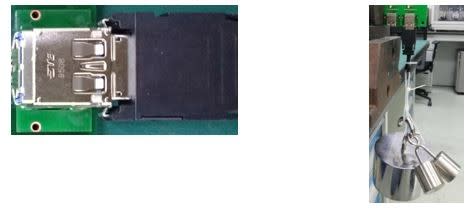Industrial USB3.0 Plug Kit
Follow articleHow do you feel about this article? Help us to provide better content for you.
Thank you! Your feedback has been received.
There was a problem submitting your feedback, please try again later.
What do you think of this article?
Figure 1.1: Outline of the TE Innovation
Figure 1.2: Evolution of Interfaces
Figure 1.3: Specifications & Performances
1. Voice of customer:
TE Connectivity, INDUSTRIAL BU developed USB 3.0, it supports the application that demands increased data transfer rate (up to 5Gbit/s), lower power consumption, high power output and backwards-compatible with USB 2.0. USB 3.0 consists of a new higher speed bus known as SuperSpeed that is in parallel with the USB 2.0 bus.
Figure 3.1: Differences of USB2.0 vs USB3.0
Figure 3.2: Cable cross-section vs Wire assignments illustration
Figure 3.3: USB 3.0 BUS ARCHITECTURE
USB2.0 is a part of an existing INDUSTRIAL product portfolio. USB3.0 is developed in closing the portfolio gap. The customer base for such products is all around the globe (AP; EMEA; NA). Lead customer base is currently in AP region - Japan. USB 3.0 market worldwide have a potential of US$1 Billion.
Figure 3.4: Exploded view of USB 2.0 & Wire Schematic
2. Challenges
Customer requested deadline for first prototypes was <4 weeks. Initial concept of USB3.0 as follows.
- Process: ... ready moulding part à assembly U3 contactà assembly spacer …
- Focused on the inner core assembly process which differs between USB3.0 and USB2.0
- Remark: U3 contact can be reused. Need to develop new moulding and spacer tooling.
Figure 4.1: First Concept
Patent search:
- We know that there is so many patents protection on USB3.0 product. We need to investigate if the above concept is covered in some patent.
- Investigation result is that the above concept is surrounded in patent no. CN101425650BB (See Figure 4.2).
Figure 4.2: Patent Search Results
3. Results:
New concept.
- After brainstorming and several design reviews, another type of new concept was created. Please see below photo.
- Process: ... ready molding1 à assembly U3 contactà process molding2 …
Figure 5.1: New Concept
Benefits of TE Solution.
- The new concept is stable compared to the first concept. U3 contact is moulded tightly.
- Spacer part is combined into molding2 without a separated component. The structure is simply also.
- Above structure and process can avoid the patent issue.
- Above new structure, we apply for TE own patent also.
Performance:
- During the process, key points were controlled. The impedance result is within spec.
- See below photo.
- Control stripping length 2.5mm and pressing height 5.2mm will bring good impedance result.
Figure 5.2: New Concept
Figure 5.2: New Concept
- It is industrial type USB3.0, when mated with female connector, it can be mated firmly. It can offer 40 N retention force also. Please see below photo.
- It has been past the qualification test also.
Figure 5.3: New Concept
4. Conclusion
- IND new USB3.0 plug kit can be developed successfully. It is because of good teamwork.
- Currently, the new USB3.0 plug kit product was mass production and customer placed order also.
References
[1] Bob Dunstan, “USB 3.0 Architecture Overview”, March 2010.
[2] ”TE Connectivity Patent Award Letter”, April 2020.
[3] [4] [5] Ankur Tomar, Edmud Lim, “Introduction to USB 3.0 Protocol”, vol.1, April, 2011















